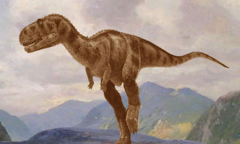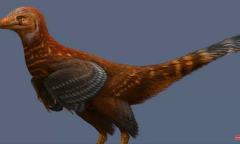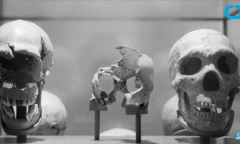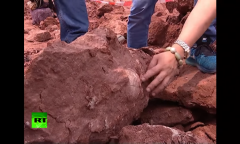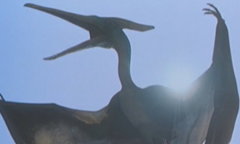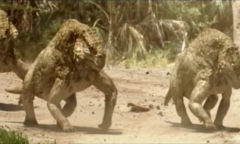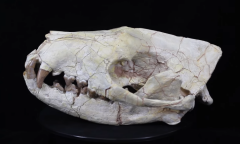By KM Diaz, | May 10, 2017
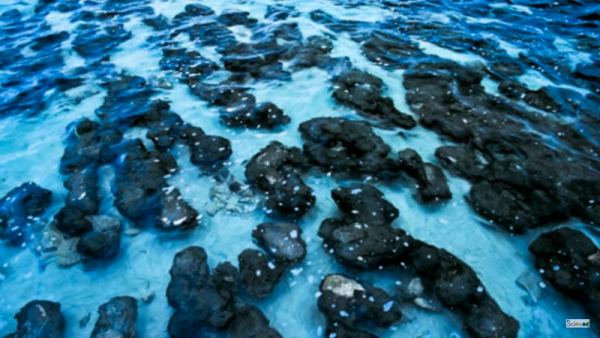
Ancient fossilized stromatolites were found in the Pilbara deposits during the late 1970s. (YouTube)
New fossil evidence of early life has been discovered in an old hot spring deposits in the Pilbara, Western Australia dated more than 3.48 billion years. The findings could extend the evidence of life at land-based hot springs on Earth and also hints where to search life on Mars.
Ancient fossilized stromatolites - rock formations made up from a group of microorganisms - were found in the Pilbara deposits during the late 1970s. These were previously described as living in a shallow, quiet water coastal environment similar to the modern setting of Shark Bay.
Like Us on Facebook
But over the past 20 years study, researchers were able to have a better understanding of the environment which implies it was actually part of an ancient volcano.
In a setting of modern volcano, hot fluids flow in the rocks underground and eventually manifest as hot vents at the base of the ocean, like the terrestrial hot springs on land where fresh rainwater is available.
However, the volcanic setting in the Pilbara was still unclear on whether these hot fluids were discharged on land to produce hot springs. If that so, the hot springs could be linked to early signs of life.
In addition, the recent discovery from the Pilbara produces a smoking gun to a terrestrial hot spring in the form of a distinct rock type called geyserite. This was spotted alongside a variety of textures that indicate life. Geyserite forms on the sides of terrestrial hot spring pools and geysers, and are commonly found today in New Zealand, Yellowstone National Park, and Iceland.
The biological signs obtained include stromatolites, and some newly identified microbial textures, such as microbial texture describing microbes that spread upon the ancient sinter terraces - rocks appear in hot spring pools.
Researchers also uncovered evidence of gas bubbles trapped in a sticky substance to maintain the bubble form. All of these are similar to fossil textures discovered in modern hot spring settings in Rotorua, New Zealand, and Yellowstone National Park.
These new findings don't just increase the record of life living in hot springs and land by three billion years or geyserite, it also show that life was inhabiting the land earlier than previously believed or at least up to 580 million years.
Prior to these findings, the oldest evidence of microbial life on land was obtained in South Africa dated 2.7 billion and 2.9 billion years, while the new discovery suggests evolution and even the origin of life on Earth.
Researchers now considered two theories about the origin of life: it originated in the ocean in hot vents, or it started on land in Charles Darwin's version of the warm little pond that was attached to a hot spring system.
The findings of biological signs and fossil conservation in ancient hot springs present a geological aspect regarding the kinds of environments inhabited during the early history of the Earth. This may also influence the theory that life started on land and then took a downhill adaptive evolutionary pathway towards the salty ocean, while the opposite is proposed.
Life on Mars
These findings have significant indications about the search for life outside the solar system, like Mars which has been a target for a long time to search for extraterrestrial life. It was generally believed that the red planet was similar to Earth, which once had active volcanoes and liquid water flowing on its surface.
Previous data from the Spirit rover has recognized ancient hot springs - the age likely related early Earth - in an area named Columbia Hills. In fact, the area is one of the top three possible landing sites chosen for NASA's upcoming Mars2020 rover that has the main goal to search for fossil life on Mars.
These findings hint that if life developed on Mars, and then it was stored in ancient hot springs on Earth, there is a possibility that it could be preserved in ancient hot springs on the red planet too.
-
Use of Coronavirus Pandemic Drones Raises Privacy Concerns: Drones Spread Fear, Local Officials Say

-
Coronavirus Hampers The Delivery Of Lockheed Martin F-35 Stealth Fighters For 2020

-
Instagram Speeds Up Plans to Add Account Memorialization Feature Due to COVID-19 Deaths

-
NASA: Perseverance Plans to Bring 'Mars Rock' to Earth in 2031

-
600 Dead And 3,000 In The Hospital as Iranians Believed Drinking High-Concentrations of Alcohol Can Cure The Coronavirus

-
600 Dead And 3,000 In The Hospital as Iranians Believed Drinking High-Concentrations of Alcohol Can Cure The Coronavirus

-
COVID-19: Doctors, Nurses Use Virtual Reality to Learn New Skills in Treating Coronavirus Patients


